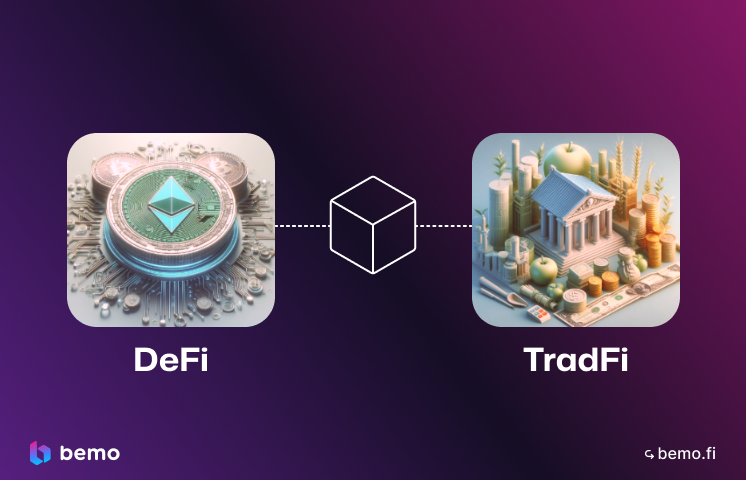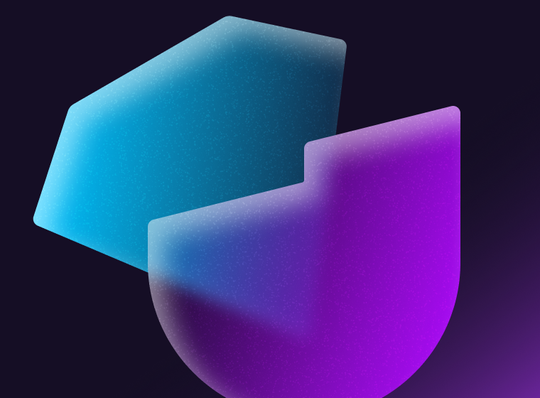Introduction to Decentralized Finance
DeFi is an innovative model of financial services based on blockchain technology. It enables easy access to financial services without the need for intermediaries.
This guide highlights the principles, benefits, and challenges of DeFi.
What is DeFi?
DeFi, short for "Decentralized Finance," is an ecosystem of financial applications on the blockchain. Unlike traditional finance (TradFi), DeFi operates independently of banks or regulatory authorities. Transactions are executed through smart contracts, ensuring transparency and autonomy.
The Evolution of Financial Systems
Finance has progressed through three stages: TradFi, CeFi (Centralized Finance on blockchain), and DeFi. DeFi removes centralized control, offering users greater independence and opportunities.
Ethereum's first smart contracts laid the foundation for DeFi, creating the basis for a blockchain-driven ecosystem. From 2015 to 2018, key decentralized projects emerged, igniting the 2020 DeFi boom. Four years later, DeFi has become a robust sector.
DeFi vs TradFi

In order to get the reason for becoming DeFi, we need to understand the basics of traditional finances – their pros and cons, actual place in our day-to-day life.
TradFi includes banks, stock exchanges, insurance companies, and other entities that facilitate transactions, savings, investments, and loans. DeFi, or Decentralized Finance, is a financial ecosystem built on blockchain technology that aims to recreate and improve upon the financial services provided by TradFi, but without central authorities.
If we want to compare TradFi and DeFi, we need to mark key basics of both of them.
TradFi:
• Centralization: operates through centralized institutions that have control over the financial transactions. Banks, for example, hold customer deposits and manage the flow of money
DeFi:
• Decentralization: eliminates intermediaries by utilizing blockchain technology, allowing users to interact directly through smart contracts. This reduces the reliance on traditional institutions.
TradFi:
• Regulatory Oversight: heavily regulated to ensure the stability of the financial system and protect consumers. This includes compliance with laws regarding money laundering, fraud, and consumer protection.
DeFi:
• Trustless Environment: trust is placed in code rather than people. Smart contracts automatically execute transactions when certain conditions are met, minimizing the risk of fraud or manipulation.
TradFi:
• Access and Inclusion: financial services available to many people but access can still be limited by factors such as geography, credit scores, and even social status. Some individuals remain unbanked or underbanked.
DeFi:
• Financial freedom: decentralized platforms are accessible to anyone with an internet connection and a digital wallet, which fosters a more inclusive financial system. Users can engage with these services regardless of their location or financial status.
With TradFi you have access to a stable and long-term existing system. With DeFi you have access to digital and financial freedom.
Why DeFi Matters Today
DeFi provides global access to financial services. It empowers users to control their assets in a transparent system, free from intermediaries. In contrast, TradFi centralizes control, often limiting user autonomy.
DeFi complements Web3 and blockchain’s decentralized vision, reinforcing its transformative impact.

Key Characteristics of DeFi
- Decentralization: DeFi eliminates central authorities, enabling peer-to-peer transactions and minimizing reliance on intermediaries like banks.
- Transparency: All transactions and smart contract codes are publicly accessible on the blockchain. This visibility allows users to verify and audit activities, fostering trust in the system.
- Accessibility: DeFi services are available to anyone with an internet connection and a compatible digital wallet, promoting financial inclusion irrespective of location or socioeconomic status.
- Security and Immutability: By leveraging blockchain technology and smart contracts, DeFi ensures data integrity and transaction security. Once recorded, transactions cannot be altered, reducing fraud risk.
- Interoperability: DeFi protocols are designed to integrate seamlessly with each other, creating a flexible ecosystem. This composability enables the development of advanced financial products and services.
- Permissionless and Open-Source Nature: DeFi platforms are typically open-source and require no permission to use. This openness encourages innovation and allows for collaborative development and improvement.
How Does Decentralized Finance Work?
The Role of Blockchain Technology Blockchain functions as a secure and shared database accessible to multiple nodes. It ensures that all participants can access the most up-to-date information simultaneously. Designed for decentralization, blockchain enables systems to be collectively managed by users rather than a central authority.
Smart Contracts Smart contracts are self-executing programs that automate agreements between parties. Hosted on a blockchain, they perform predefined actions when specific conditions are met. This removes the need for intermediaries, reducing fraud risk while enhancing transparency and efficiency.
DeFi Protocols DeFi applications rely on smart contracts to operate. These include tools for token exchanges, lending, deposits, and the creation of advanced DeFi strategies. Such protocols drive the innovation and flexibility of the DeFi ecosystem, offering users an expanding range of financial opportunities.
Benefits of Decentralized Finance

- Financial Inclusion. DeFi expands access to financial services for unbanked and underbanked populations, especially in developing regions. It removes the barriers imposed by traditional banking systems.
- Cost Efficiency. By eliminating intermediaries, DeFi drastically reduces transaction fees. This makes financial services more affordable and accessible to a wider audience.
- Autonomy. Users maintain full control over their funds, removing reliance on third-party institutions. This grants individuals financial independence and sovereignty.
- Transparency. DeFi operates on public blockchains, ensuring all transactions are visible and verifiable. This openness builds trust among users.
- Accessibility. Participation in DeFi requires only an internet connection and a digital wallet. This simplicity allows anyone, regardless of location or financial background, to engage in the global economy.
Risks and Challenges in DeFi
While DeFi offers numerous benefits, it is essential to acknowledge the associated risks:
- Complexity for New Users: DeFi platforms often have intricate interfaces and use technical jargon, making them difficult for beginners to understand and navigate. Tip: Look for platforms with detailed tutorials, user-friendly guides, and responsive customer support to ease the learning curve.
- Market Volatility: Cryptocurrencies in DeFi can experience extreme price swings, posing the risk of significant financial losses. Tip: Diversify your portfolio and monitor market trends to minimize exposure to volatile assets.
- Security Vulnerabilities: Smart contracts, the backbone of DeFi, may contain exploitable flaws that hackers can target, potentially leading to loss of funds. Tip: Use platforms that have undergone rigorous security audits and adopt strong security measures.
Given these risks, it's crucial to research DeFi platforms thoroughly before engagement. The golden rule of crypto remains: DYOR (Do Your Own Research).
Practical Examples of DeFi Applications
In DeFi, several fundamental applications and projects form the ecosystem's backbone. These are often referred to as “primitives.”
Stablecoins

Stablecoins are tokens pegged to familiar fiat currencies, most commonly the US dollar.
- Centralized Examples: USDT and USDC, issued and managed by centralized entities.
- Decentralized Examples: DAI, backed by smart contracts and decentralized protocols.
Decentralized Exchanges (DEXs)
DEXs enable token trading without intermediaries, offering greater transparency and user control.
- Notable Projects: Uniswap and Curve, leading platforms for seamless token swaps.
Lending and Borrowing
These applications function similarly to traditional banks, allowing users to deposit tokens to earn interest or borrow against their holdings.
- Prominent Platforms: AAVE and Compound are recognized leaders in decentralized lending markets.
Liquid Staking
Liquid staking allows users to participate in blockchain validation while maintaining liquidity through Liquid Staking Tokens (LSTs). These tokens can be further utilized in DeFi.
- Examples: Lido and RocketPool are popular platforms offering liquid staking solutions.
Yield Farming and Liquidity Mining
These projects leverage DeFi primitives to create advanced investment strategies.
- Top Platforms: Yearn Finance and Beefy provide tools for maximizing yield through automated strategies.
Restaking
Restaking platforms enable users to redeploy native network tokens, like ETH, to secure other networks or projects, earning additional rewards.
- Examples: EigenLayer and Symbiotic are leading projects in this innovative space.
These primitives represent the foundation of DeFi, but the ecosystem extends far beyond them. New and unexpected projects emerge regularly, pushing the boundaries of decentralized finance.
DeFi and the TON ecosystem

The TON ecosystem is young but rapidly growing, with a robust DeFi landscape taking shape. It incorporates the best innovations from the crypto industry in recent years, giving it significant potential for the future.
DEX
StonFi and DeDust were among the first decentralized exchanges on TON. New platforms like Torch Finance and Crouton Finance are now emerging, utilizing Curve’s stableswap model.
Liquid Staking

bemo pioneered liquid staking on TON, later joined by other projects such as Tonstakers, Ton Whales, Hipo, and Stakee.
Lending
EVAA stands out as the first and most prominent lending protocol in the ecosystem.
Stablecoin

In 2024, the official integration of USDT into the TON ecosystem marked a major milestone. Decentralized stablecoin initiatives like Aqua Protocol are also gaining traction.
Restaking
Although still in its infancy, restaking is represented in TON by the Utonic project, which is paving the way for this innovative concept.
Many projects are currently in testing and nearing launch, while external developers are also planning integrations with TON DeFi, signaling a promising future.
FAQs
Explain me DeFi in 30 seconds and imagine that I’m your granny
DeFi, or Decentralized Finance, is like a digital version of your bank, but without the bank. Instead of going to a physical bank to save money or get a loan, you use computer programs on the internet. These programs let you lend, borrow, or trade money directly with others, all using cryptocurrencies. It’s open to everyone and doesn’t need a middleman, like a bank or a government, which can make transactions faster and sometimes cheaper.
How safe is it?
As safe as traditional banks. If you understand the rules, don’t use suspicious sites and risky schemes, your funds will be safer than in your bank account. Of course every system is not perfect, but as in DeFi, as in TradFi improvements and upgrades came everyday.
How to Get Involved in TON DeFi
Getting started is easier than it seems. Install a wallet like Tonkeeper or another TON-compatible option.
You can find guidance on acquiring your first TON tokens and diving into DeFi in our comprehensive guide. [Guide link]
Conclusion
The Growing Importance of DeFi
DeFi is transforming financial services by utilizing blockchain technology to create a more inclusive, transparent, and efficient system. It provides an alternative to traditional finance, equipping users with tools for wealth building, passive income generation, and secure asset management. Though still developing, DeFi has become a vital component of the cryptocurrency ecosystem, reshaping how we engage with finance.
Next Steps for Interested Users
For those curious about DeFi, the best approach is to start small and build your understanding step by step. Begin with the basics, use beginner-friendly platforms, and stay updated on developments. With proper research and caution, DeFi can become a valuable part of your financial journey.
DYOR (Do Your Own Research).








